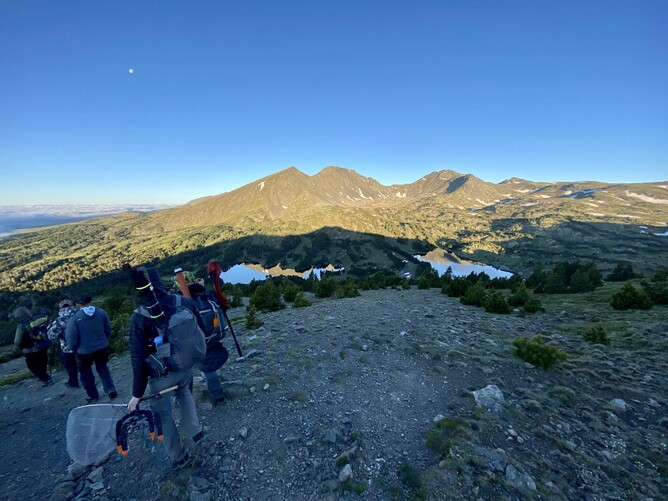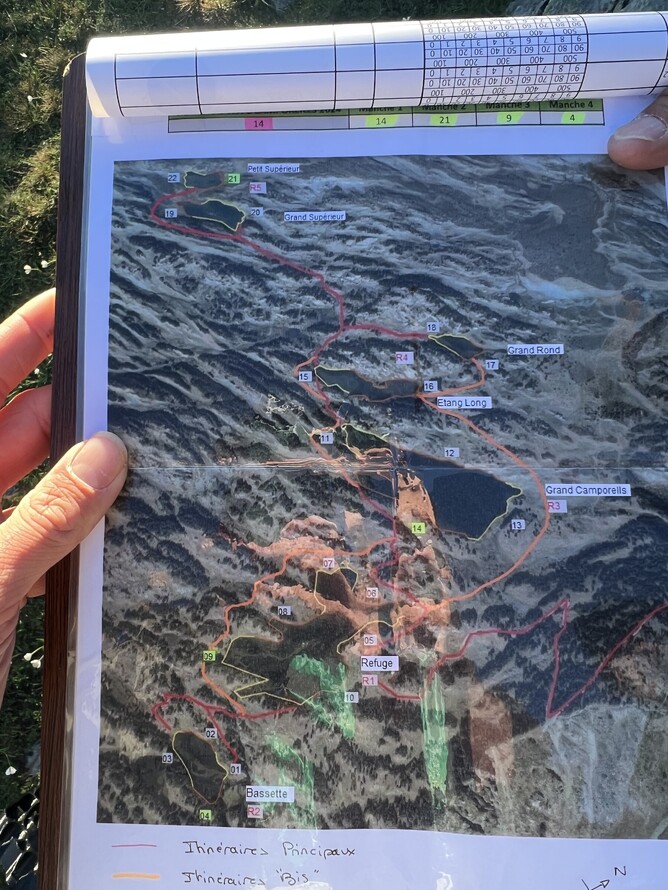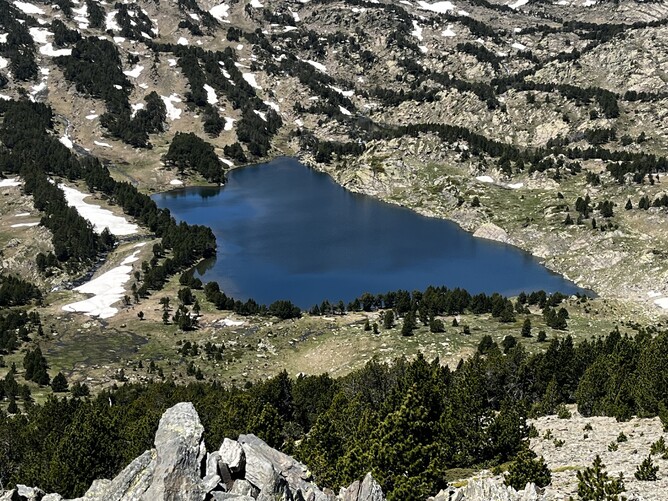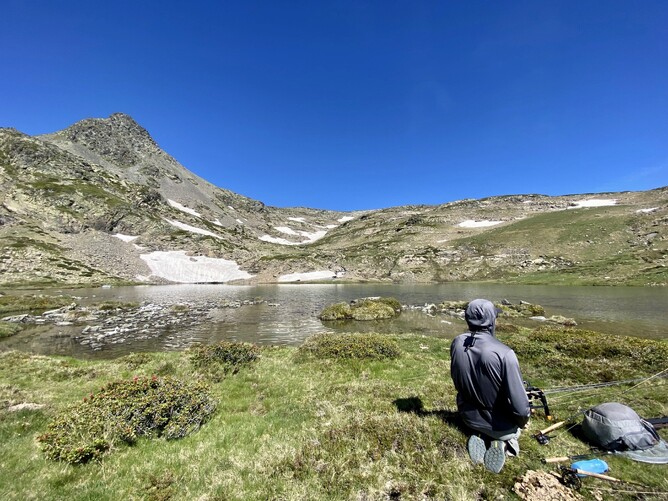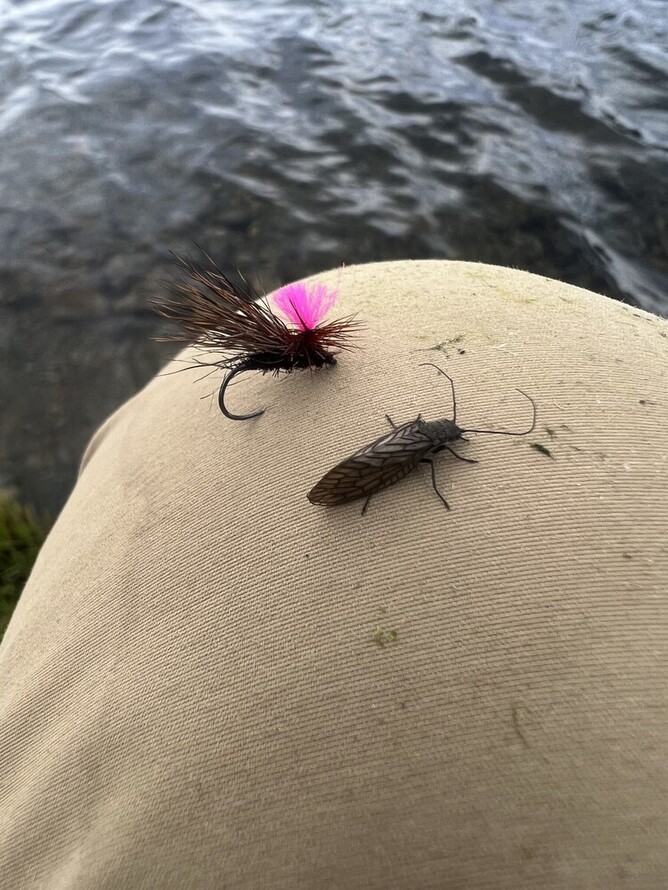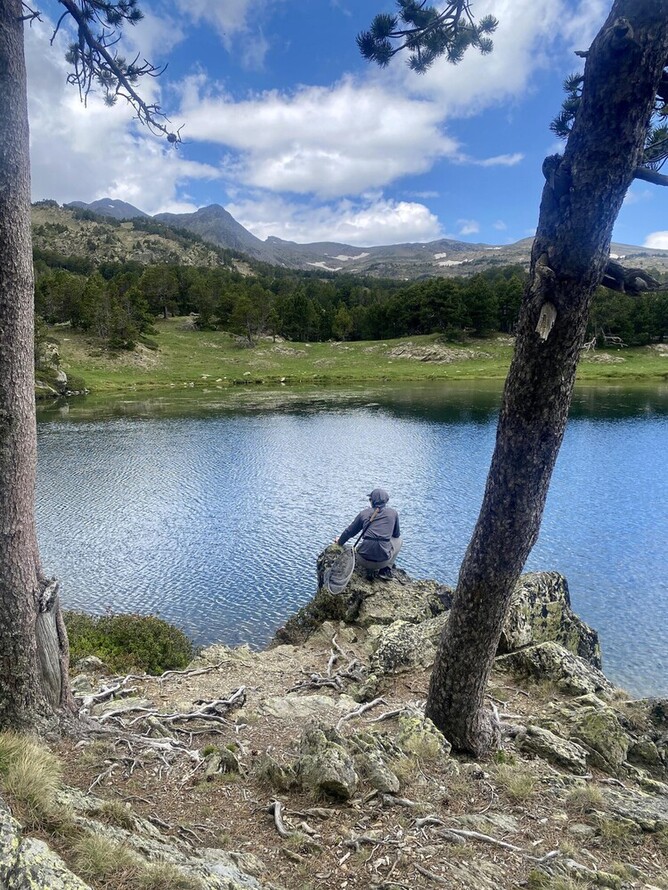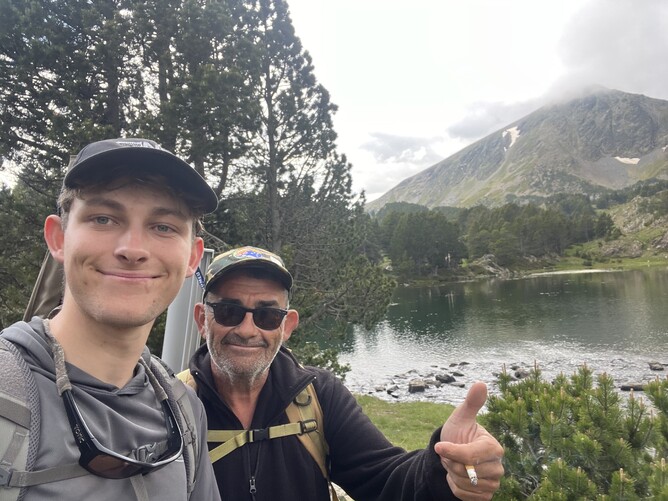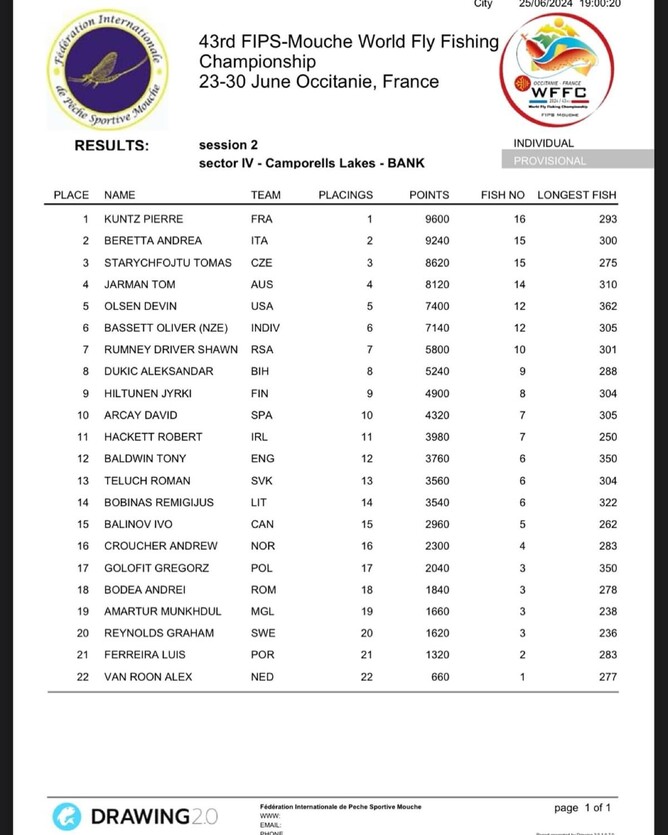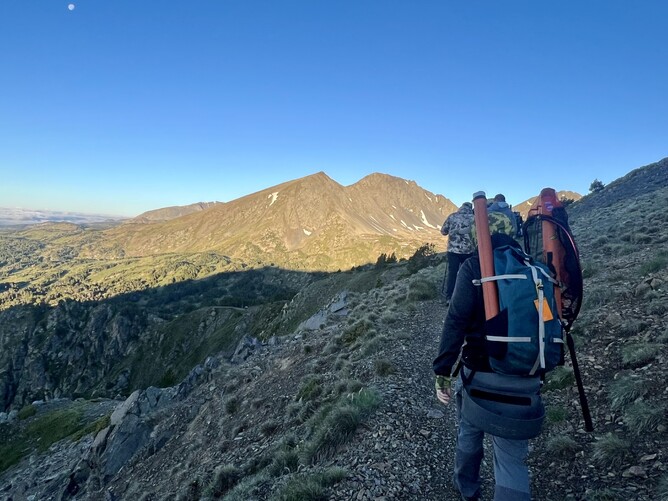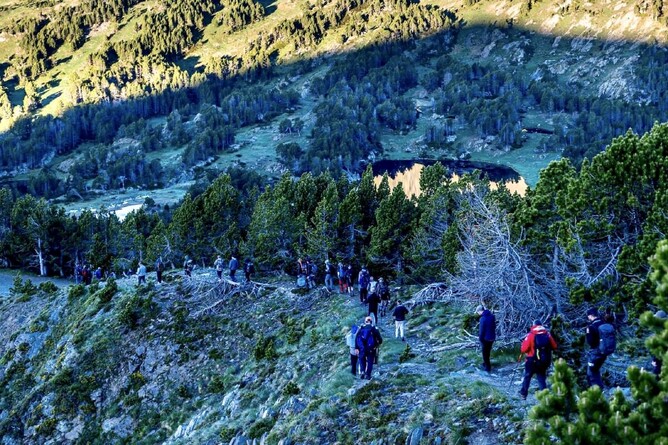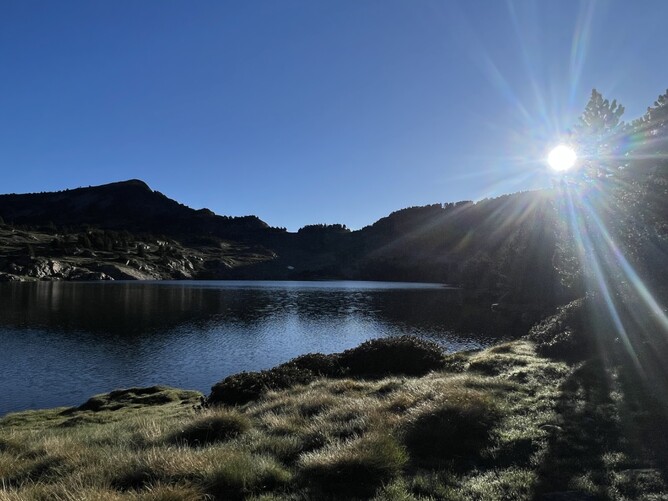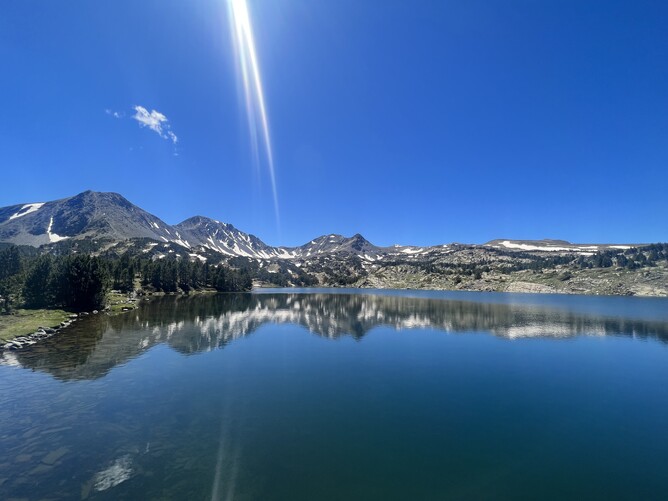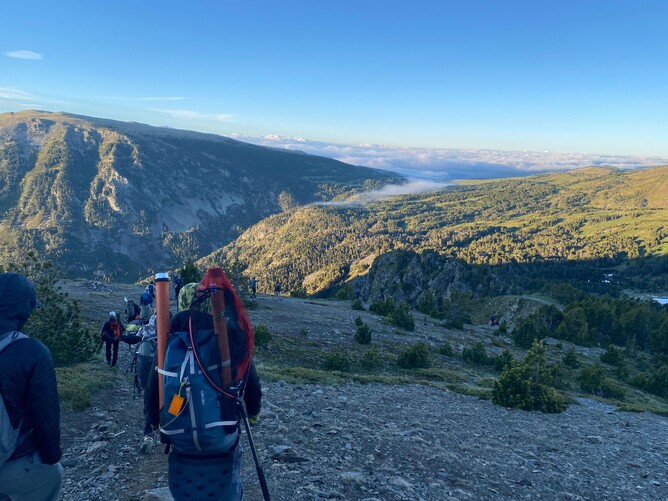World Fly Fishing Champs 2024 France Ollie Bassett - Session 2 Camporells Lakes
My second session of the WFFC 2024 was on the Camporells lakes, a series of high mountain (2300m +) lakes full of clever wild browns. On both lake sectors we rotated lakes (not everyone fished each lake) with four sub sessions of 1 hour, the combined number of fish from which made the final session result. Although not every lake was equal most had a similar number of fish, which (along with the rotations) made it quite fair. It was a unique and cool venue which required a lot of hiking at altitude, some days we walked close to 20km. The two mountain lake sectors in France were probably my favorite from any venue I've competed on at in the worlds.
Unfortunately, Tim was following me in the draw rotation for the venues, so I had no information on what had happened the day before. This meant I had to fish from what I’d heard before the comp (and instinct) rather than fresh intel like the other teams. Although I had 5 rods set up (distance dry 5wt, wets 5wt, straight-line nymphs 5wt and small streamers on a 6wt), I ended up fishing my river dry fly rod with 0.09 and then 0.08mm tippet for dry and sight nymph for (almost) the entire session. Only later did I find out others had done well plonking, shallow washing line (dry with chiro or wet on droppers) or straight lining, which I wish I’d tried particularly in the final rotation where I think I could have caught several more fish and jumped a few placings. However, given the short sub sessions, long beats and the consistent (though not super easy) success I was having with the dries I stuck with that approach rather than gamble to try something new which I was unsure of at the time. This is probably where not having fresh intel from the day before hurt me, although on the whole I did fish with a pretty effective approach throughout the sessions.
Camporells lakes
The rotation map
The lake from my first rotation - I fished most of the left side
My first beat was super long along the edge of one of the two bigger lakes (around 350m) with fishing rising near the bank (mainly for small midges) in the glassy waters from the still morning weather. I made the mistake of trying to fish the edge of the whole beat rather than targeting certain areas where the fish were more active – I learned from this for the remainder of the lake sessions in the comp and instead targeted key areas with active fish which really helped. I caught a fish straight away on a size 20 shuttlecock (small black sh*t) dry fly which was good, but with such a sparse fly I wasted time getting it floating well again. Combined with the difficult task I’d set myself of trying to cover the whole beat (the best part of which seemed to be the second part) I got myself a bit frazzled and wasted time due to slow fly changes and catching trees which overgrew much of the beat. I caught four more fish in the final 20 minutes of the rotation on similar small dries, however, only one of these measured giving me a total of two fish for the first hour. The wasted time, incorrect beat management and undersize fish cost me a bit in this beat, but it did provide me with a guide of how to approach the rest of the day, so that at least was positive and two fish wasn’t a disaster with three hours left.
My second rotation was on the very highest lake which was very totally desolate around the edges, as well as very small and quite shallow with only two beats on it. The water had a small riffle from the growing thermal midday winds on the near bank. The far side was glassy with fish cruising a mudflat in the super clear and still water. A small stream also entered on the opposite bank into this area. Fish were actively rising across the lake, however these were concentrated near the middle of the lake at the extent of casting range with the closest active fish around 15 meters out from the downwind bank. Given my experience in the first rotation, I elected to try first for the most active fish directly out from the beat marker on the downwind side and sat next to the Slovak (who had the same idea) on either side of the marker. I also changed to 0.08mm tippet to see if it would reduce the rate of refusals from the very clever fish.
The high alpine lake from my second rotation - I fished the right hand side of the lake
While waiting for the session to start I spotted a fish cruising a small cove formed by a rocky outcrop island near the bank a few meters inside my beat where food was concentrated by the wind. I began the session by laying a trap with the small midge shuttlecock which the fish ate beautifully as it came around again. I set the hook and absolutely nothing! The fish darted off and I left Dad to watch in hopes it would come back. At this point I decided to forget about the missed opportunity and stick with the original program. I changed to a size 16 black beetle dry and began fan casting out into the wind with my dry fly rod making successively longer casts. I caught a few undersize fish closer to the edge before catching two measuring fish making long 20 m casts into the wind with the light 3wt set up. I then took my 5wt dry fly setup (0.10mm) with a size 16 black tavanas (Sialis imitation) to cast further into the wind which brought me another fish while twitching the dry. I also had few fish come and eat (slash) the bigger dry in the riffled water which didn’t stick, which at distance was to be expected. With 15 minutes left I decided to go try the other side (still glassy) as the action had slowed on the downwind side.
As I grabbed my 3wt dry rod I asked Dad (our teams captain) if he’d seen the first fish I’d missed. He hadn’t, but I checked nonetheless and there it was! Dad reminded me not to fixate and waste my time (worried the fish might not be catchable) but I cast the dry (this time a beetle) on its nose and again it ate it beautifully. This time it stuck, and stoked to get my revenge I tried some long casts into a breezy area halfway around the beat to finish the session. I lost one fish which unfortunately popped off after a few seconds quite a long way out. All in all though I was much happier with the second rotation for a total of 6, especially given the beat was more difficult.
The third beat was on the main lake opposite the Camporells refuge and seemed to have two areas where the fish were more active near the bank which I decided to target. The first was between a weed bed and the bank along a 50-meter stretch with good numbers of fish visible, and the second near a big rock where I could spot fish cruising. I started near the weed and missed a dry fly eat on the beetle near the bank. The missed dry fly eats were a common story for a lot of competitors I talked to later, probably due to the speed and often nervousness the fish took with. I had a lot of fish reject the dry after very closely inspecting it which didn’t seem to improve with any of the many of the fly changes I made even on the super thin (0.08) tippet with mud. After 20 minutes I changed to a size 18 PT with a black 1.5mm bead to try sight nymphing in the glassy conditions. This proved to be a good change bringing me two fish in the next 15 minutes, although the speed at which the fish ate meant I missed a few too. At least they were more confident with the nymph.
A Sialis and my dry fly. This was very effective when the thermal winds began
My third beat on the main lake
Unfortunately, the clouds returned and made the sight nymphing very difficult. I switched to a beetle dry and tried putting it on the head of fish to get reaction takes which brought me my third fish. Unless the fly was plopped on the fishes’ head, they wouldn’t commit instead taking their time to inspect and then reject the fly. The odd patch in the clouds meant I kept switching between nymph and dry, however whenever I’d made the change the clouds switched too so I wasted some time and decided with 20 minutes or so left to try by the big rocks instead where I’d seen the other active fish. I tried on my way over to catch some fish under a tree without success.
Once I got to the rocks the active fish from when I’d been scouting the beat had disappeared. I waited for a few minutes but couldn’t see much so moved a little further to where the odd fish was rising near the bank. I didn’t have much time left and decided to try a small size 16 deer hair Sialis dry because there were some falling onto the water. With just a couple of minutes left a fish rose in front of me and slashed at the dry as I twiddled it on the surface. This one stuck and I had my fourth fish for the session and my 10th total with one rotation left.
On my way to the next lake, I chatted to Tom (Aus) and Andrea (ITA) who had 11 fish each and I also learned that Devin (USA), Tomas (Czech) and Pierre (FRA) had similar or higher numbers. I knew I needed at least a few more fish to fight for the top places.
My final beat was shorter and quite interesting. The border was halfway across where a small stream drained into the beat where quite a few fish were rising, unfortunately though most of these were just inside Andrea’s beat. A few meters around a stream drained the lake before a wooded shore (where I spotted a few fish) and some reeds. Further out were some interesting weed beds where some fish were cruising near the surface. The only place to get a good cast out was on the beat boundary by the stream mouth, the rest of the beat had lots of trees and only short casts were possible directly near the edge.
I caught several undersized fish and missed a take on the dry from the stream mouth, as well as catching one measurer close to the stream on a small black F fly and another much further out from there that also measured. Andrea caught 4 of the fish on his side of the marker on some sort of dry wet combo quickly however and Tom caught a couple as well. With 25 minutes left I headed around the other side and got takes from two fish near the bank sight nymphing, neither of which stuck as I didn’t quite get the timing right. The fish were very hard to hook on the nymph in the shallows (as they were so quick) and it was hard to be fast and not snap off. I tried a few long casts again from the stream mouth without success with left me with a total of 12 fish for the session for 6th place behind FRA (16), ITA (15), CZE (15), AUS (14) and USA (12 but bigger fish).
My controller and I at my last beat
I have mixed feelings about this session. I think I left a couple of fish behind in the first session if I had simply targeted the best areas with the active fish rather than trying to fish the whole very long beat which left me scrambling a bit. The last session I think fishing deeper on light tippet and small nymphs would have been much more effective and probably brought me more fish rather than being ok with chipping away on dries (and sight nymphing). I did however do well to create the chances I had, particularly in the difficult middle sessions and so without trying something totally different (which I didn’t really learn was so effective until after the session) it would have been difficult to improve my score by more than a couple of fish. Probably I needed to experiment with some different methods throughout, but it was difficult to ‘gamble’ given the short rotations and length of the beats.
A few years earlier a similar sort of session would have likely ended really badly so I was content hiking back up the hill with 6th place having chipped away in tough conditions all day to keep myself in the top 10 overall in the competition.
My groups results from the second session
The hike in
